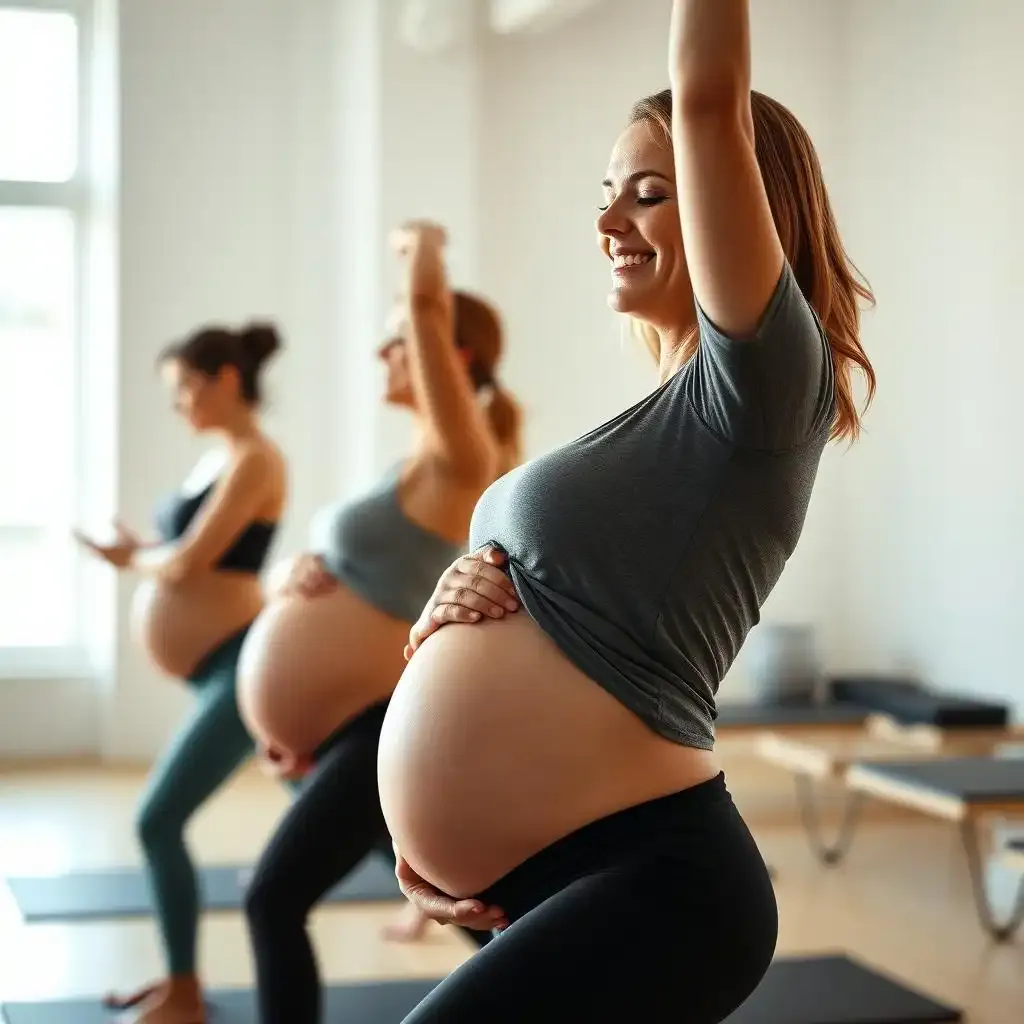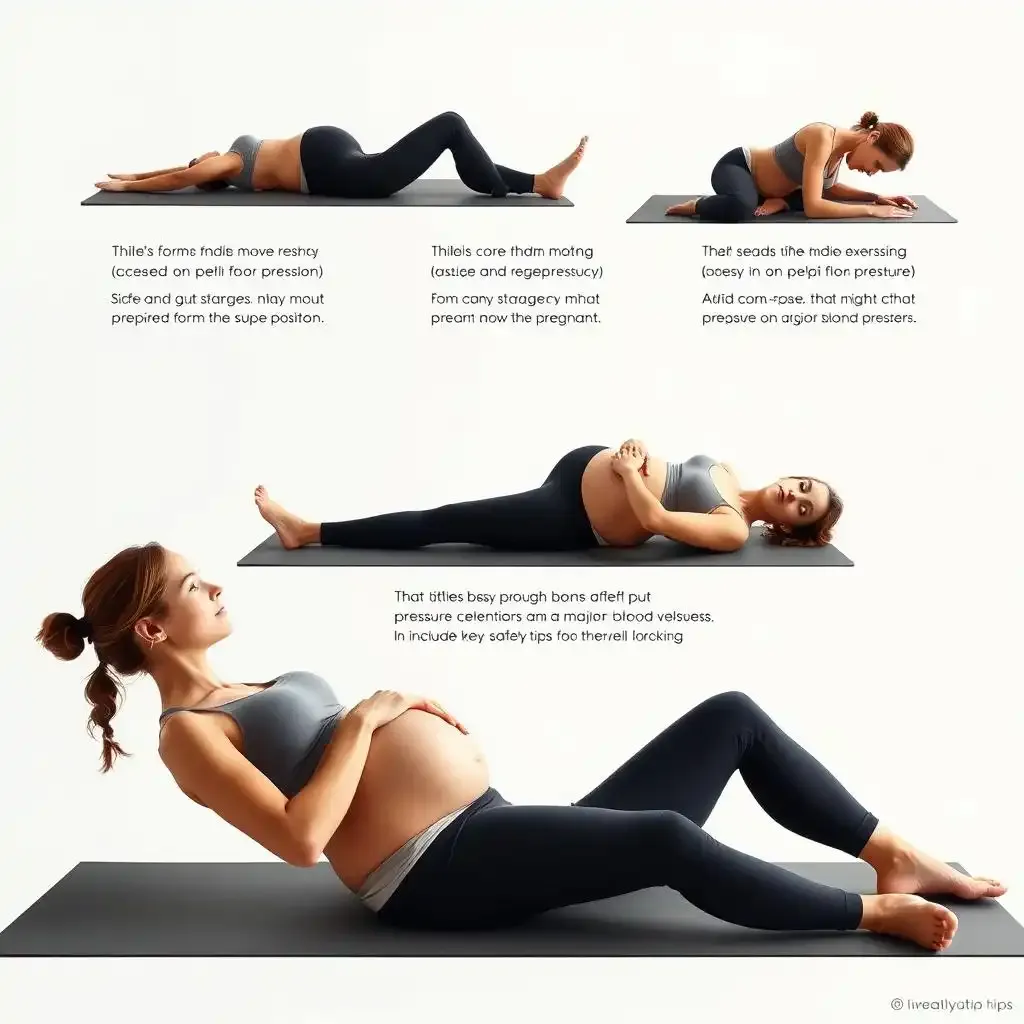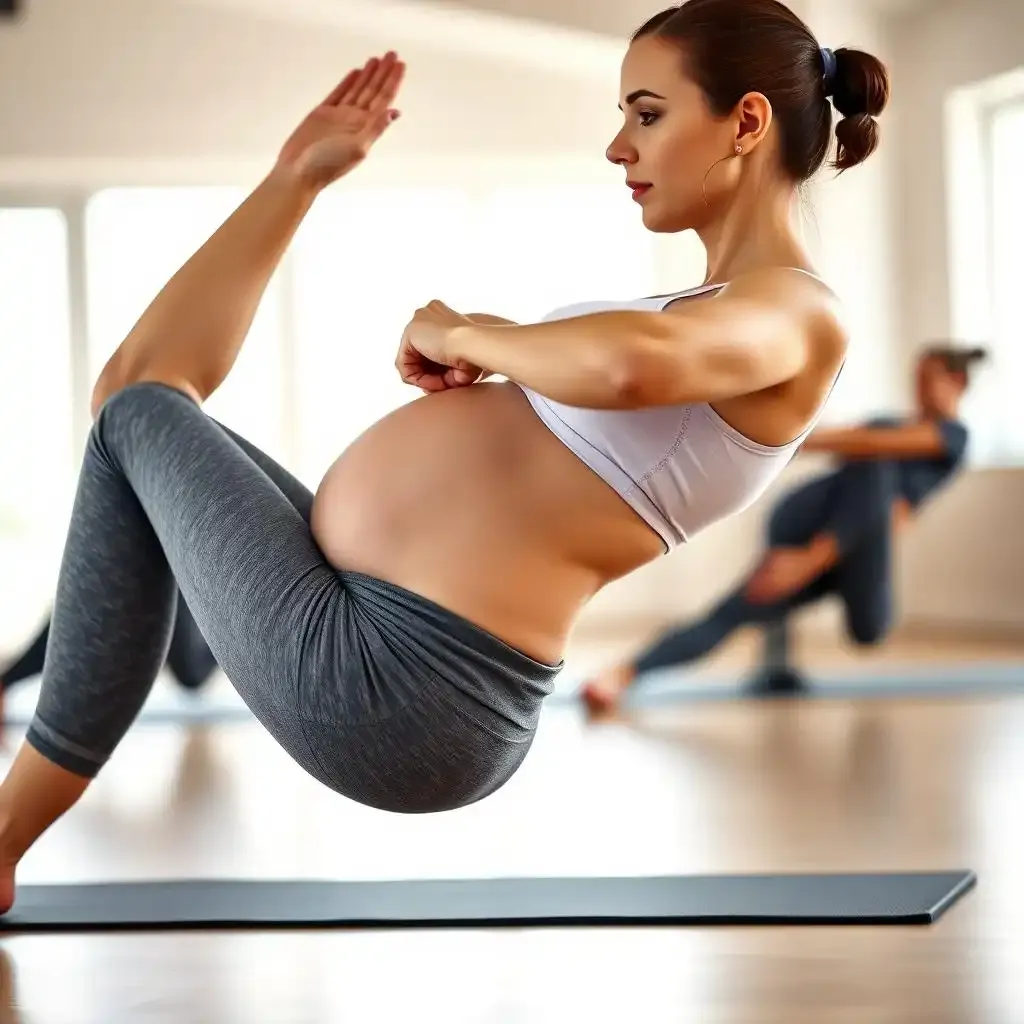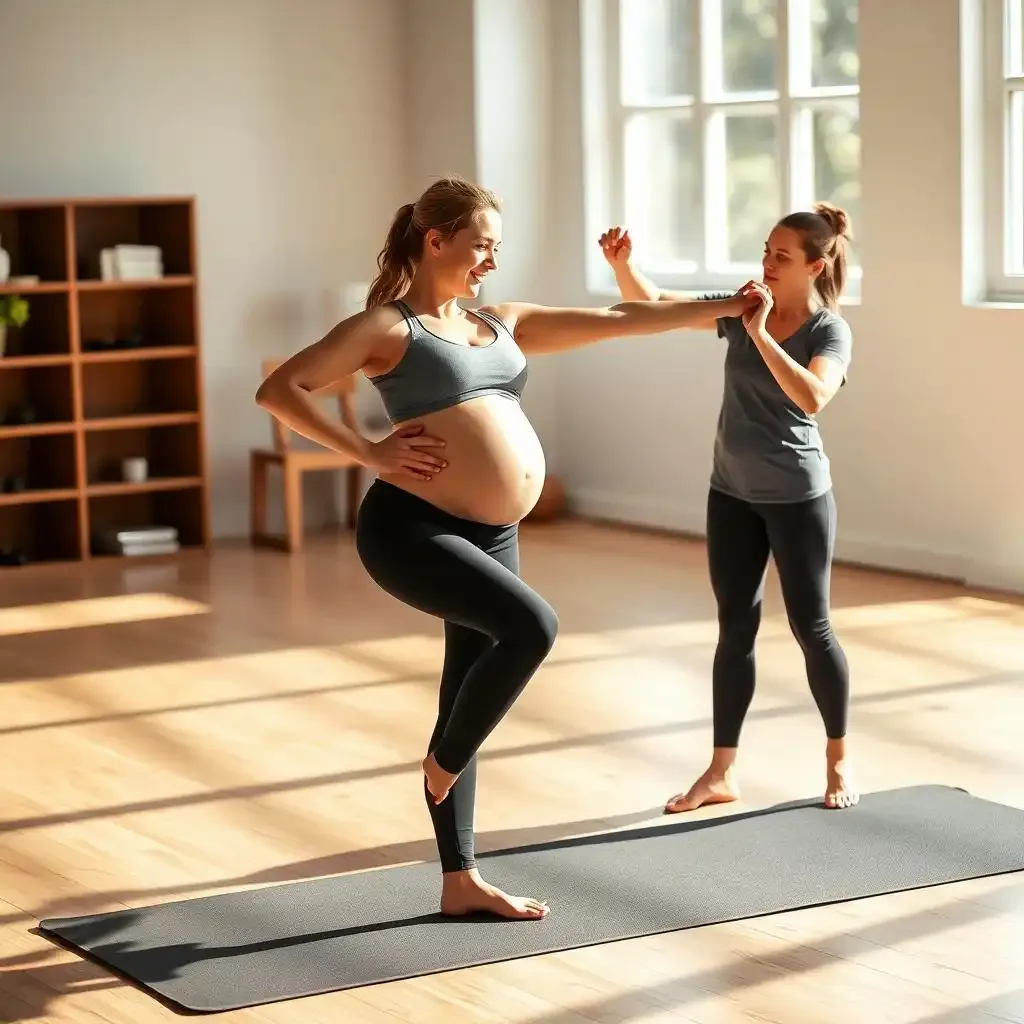Table of Contents
As any expecting mother knows, staying active and healthy during pregnancy can be a challenge. But what if there was a way to strengthen your body, improve your balance and posture, and even prepare yourself for labor and childbirth? Enter pregnancy pilates, a low-impact form of exercise that's specifically designed for pregnant women. On kizworld, we'll examine into the benefits of pregnancy pilates, discuss safety tips and considerations, and provide you with insider knowledge on creating a prenatal pilates routine that works for you. Whether you're a seasoned pilates enthusiast or just starting out, this article will guide you through everything you need to know about pregnancy pilates.
Benefits of Pregnancy Pilates | Strengthens the body and improves balance, flexibility, and posture |
|---|---|
Safety Considerations | Avoid supine work (lying on your back) during the second trimester, limit supine work to just a few minutes at a time |
Tips for Creating a Pregnancy Pilates Routine | Focus on breath work, balance, control, and alignment, consider working with a qualified instructor or taking prenatal pilates classes |
Choosing the Right Pregnancy Pilates Class or Instructor | Look for prenatal pilates classes or instructors who specialize in pregnancy exercise, ensure they have experience working with pregnant women |
Ultimate Guide To Pregnancy Pilates: Stay Fit And Safe
• The Benefits of Pregnancy Pilates: How It Can Support a Healthy Pregnancy
Strengthening Your Core and Improving Balance
Pregnancy pilates is like giving your body a superhero makeover. It strengthens your core muscles, which is super important for supporting your growing belly. Think of your core as the foundation of a house—if it's strong, everything else stays stable. Plus, it helps improve your balance, so you don't feel like you're walking on a tightrope all the time. I remember when I started doing pregnancy pilates; I felt more grounded and less wobbly. It's like your body is saying, "Thanks for the workout, I needed that!"
Another cool thing about pregnancy pilates is that it helps with posture. As your belly grows, your back might start to ache from trying to compensate. Pilates helps align your body, so you stand taller and feel more comfortable. It's like having a personal posture coach right there with you. If you're curious about how pilates can transform your body, check out our before and after stories. You'll be amazed at the difference!
Benefit | Description |
|---|---|
Core Strength | Supports growing belly and reduces back pain |
Improved Balance | Helps you stay steady and avoid falls |
Better Posture | Aligns your body for comfort and ease |
Preparing for Labor and Childbirth
One of the most amazing benefits of pregnancy pilates is how it prepares you for labor and childbirth. The exercises help strengthen the muscles you'll use during delivery, making the process a bit smoother. It's like training for a marathon—the more you prepare, the better you perform. I had a friend who did pregnancy pilates, and she said it made a huge difference during her delivery. She felt more in control and less anxious.
Pilates also helps with breath control, which is crucial during labor. You'll learn how to breathe deeply and steadily, which can make contractions more manageable. It's like having a secret weapon against pain. If you're interested in learning more about breath work in pilates, check out our guide to pilates. It's packed with tips and tricks to help you master your breathing.
- Strengthens muscles used during delivery
- Improves breath control for labor
- Reduces anxiety and increases confidence
• Safety First: Tips for Practicing Pregnancy Pilates Safely
Safety First Tips For Practicing Pregnancy Pilates Safely
Okay, so you're all excited about pregnancy pilates – awesome! But before you leap into those exercises, let's chat safety. Think of your body as a precious cargo right now, and you want to treat it with extra care. Pregnancy changes things, and what worked before might not be ideal now. That’s why finding a qualified instructor is key. They'll know the modifications needed for each trimester. You wouldn't try to build a house without an creator, right? Similarly, don't wing it with pregnancy exercises; get expert guidance. Check out our pilates in Atlanta guide for more info.
One biggie is avoiding lying flat on your back (supine position) for extended periods, especially in your second and third trimesters. Why? Because your growing baby might press on your major blood vessels, potentially reducing blood flow. Think of it like this: your baby is a little VIP, and we don't want to cut off their supply of oxygen and nutrients! Short bursts are fine, but keep it brief. For longer stretches, do side-lying or seated exercises. If you want some cool pilates apps to help you, check out our best wall pilates app review.
Trimester | Safety Tip |
|---|---|
First | Listen to your body; stop if you feel any pain. |
Second & Third | Limit supine positions; focus on side-lying or seated exercises. |
Another thing to keep in mind is your center of gravity. As your belly grows, it shifts, making you more prone to falls. Pilates helps with balance, but be extra cautious. Don’t attempt anything too challenging, especially if you're not used to exercise. Start slow, listen to your body, and gradually increase the intensity as you feel comfortable. Remember that gradual progression is key to success, just like building a muscle. Check out our stories for inspiration.
And finally, don't forget to stay hydrated! This is crucial for you and your baby. Dehydration can lead to muscle cramps and fatigue, making your workouts more difficult and possibly increasing your risk of injury. So keep that water bottle handy! If you want to know more about the essence of pilates, read our article. It’s a great read!
- Find a qualified instructor
- Limit supine positions
- Stay hydrated
- Listen to your body
“Listen to your body; it will tell you what it needs.” – This is something I always tell my clients, and it applies even more during pregnancy. Trust your instincts. If something doesn’t feel right, don’t do it. Remember, a safe workout is a successful workout. For more inspiration, check out our wall pilates challenge post.
I also want to add that if you have any pre-existing health conditions, it's super important to talk to your doctor before starting any new exercise program, including pregnancy pilates. That's just good common sense. And remember, consistency is key. Even short, regular sessions are better than infrequent, intense ones. For some cool pilates equipment, check out our review of the pilates machine.
"Pregnancy is a progression, not a race. Be kind to your body and enjoy the process." - Anonymous
• Creating a Pregnancy Pilates Routine That Works for You
Creating A Pregnancy Pilates Routine That Works For You
Setting Your Goals and Intentions
Creating a pregnancy pilates routine that works for you is all about setting your goals and intentions. Before you start, take some time to think about what you want to achieve through your practice. Are you looking to alleviate back pain, improve your flexibility, or simply feel more connected to your body? Whatever your goals may be, make sure they're specific, measurable, and achievable.
When I started practicing pregnancy pilates, my goal was to feel more empowered and confident in my body. I wanted to be able to move with ease and flexibility, despite my growing belly. With each practice, I felt more connected to my body and more capable of taking on the challenges of motherhood. If you're just starting out, I recommend checking out our guide to to get a better understanding of the principles and philosophy behind this amazing practice.
"The most important thing is to listen to your body and honor its wisdom."
Finding a Qualified Instructor or Prenatal Pilates Class
Once you've set your goals and intentions, it's time to find a qualified instructor or prenatal pilates class that can help you achieve them. Look for instructors who specialize in prenatal pilates and have experience working with pregnant women. A good instructor will be able to modify exercises to suit your needs and abilities, and provide you with a safe and supportive environment in which to practice.
When I was pregnant, I took a prenatal pilates class at a local studio in New York. The instructor was knowledgeable and supportive, and the class was personalized to meet the needs of pregnant women. We did a range of exercises to strengthen our cores, improve our flexibility, and alleviate back pain. The class was also a great way to connect with other pregnant women and build a sense of community.
Qualities of a Good Instructor | Description |
|---|---|
Experience working with pregnant women | Ensures that the instructor is knowledgeable about the needs and limitations of pregnant women |
Ability to modify exercises | Ensures that the instructor can adapt exercises to suit the needs and abilities of each client |
- Look for instructors who specialize in prenatal pilates
- Check if the instructor has experience working with pregnant women
- Read reviews and testimonials from past clients
• Choosing the Right Pregnancy Pilates Class or Instructor
Choosing The Right Pregnancy Pilates Class Or Instructor
What to Look for in a Qualified Instructor
As you start looking for a pregnancy pilates class or instructor, it's essential to keep in mind what makes a great teacher. A good instructor should have experience working with pregnant women and be able to modify exercises to suit your needs and abilities. They should also be knowledgeable about the changes that occur during pregnancy and how to adapt their teaching style to accommodate them. I found my instructor through a , and they were fantastic!
A qualified instructor will be able to guide you through the exercises and provide you with a safe and supportive environment in which to practice. They'll also be able to offer you modifications and adjustments as needed, so you can continue to enjoy the benefits of pilates throughout your pregnancy. If you're just starting out, don't be afraid to ask questions and get a feel for the instructor's style and approach.
Qualities of a Good Instructor | Description |
|---|---|
Experience working with pregnant women | Ensures that the instructor is knowledgeable about the needs and limitations of pregnant women |
Ability to modify exercises | Ensures that the instructor can adapt exercises to suit the needs and abilities of each client |
Knowledge of pregnancy changes | Ensures that the instructor understands the changes that occur during pregnancy and can adapt their teaching style to accommodate them |
What to Expect from a Prenatal Pilates Class
When you take a prenatal pilates class, you can expect a safe and supportive environment that's adapted to the needs of pregnant women. The class will likely include a combination of matwork and reformer exercises, as well as breathwork and relaxation techniques. The instructor will guide you through the exercises and provide you with modifications and adjustments as needed.
The class will also focus on strengthening your core, improving your flexibility and balance, and preparing you for the physical demands of motherhood. You'll have the opportunity to connect with other pregnant women and build a sense of community and support. I loved my because of the wonderful community!
- Safe and supportive environment
- Modified exercises to suit your needs and abilities
- Focus on strengthening your core and improving flexibility and balance
- Opportunity to connect with other pregnant women
In conclusion, pregnancy pilates can be a valuable addition to any prenatal routine, offering a range of benefits for both body and mind. By following the safety tips and guidelines outlined in this article, you can enjoy the many advantages of pregnancy pilates while keeping yourself and your baby safe.